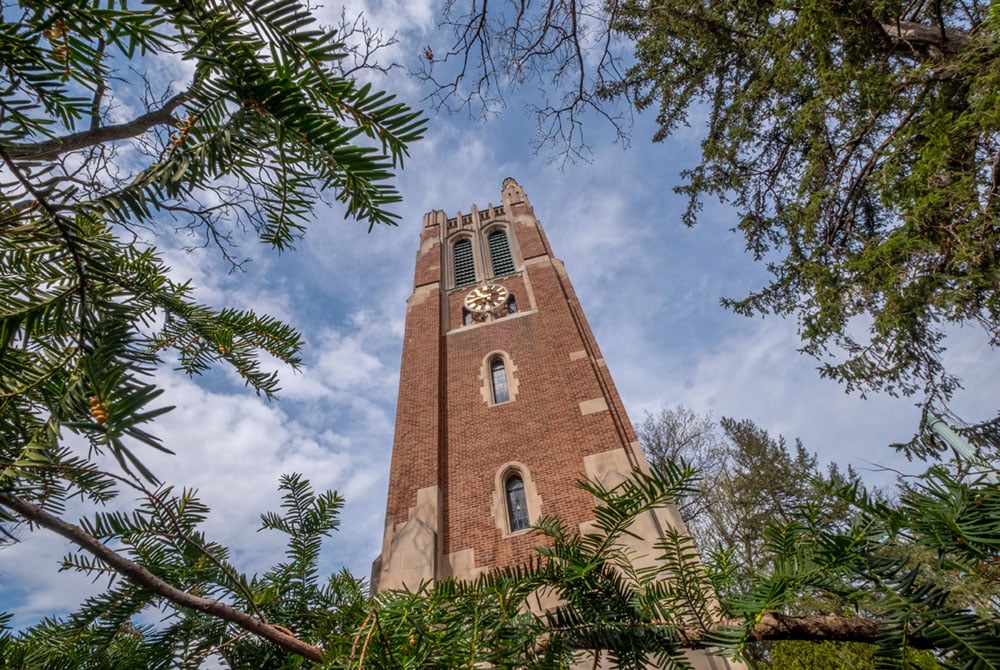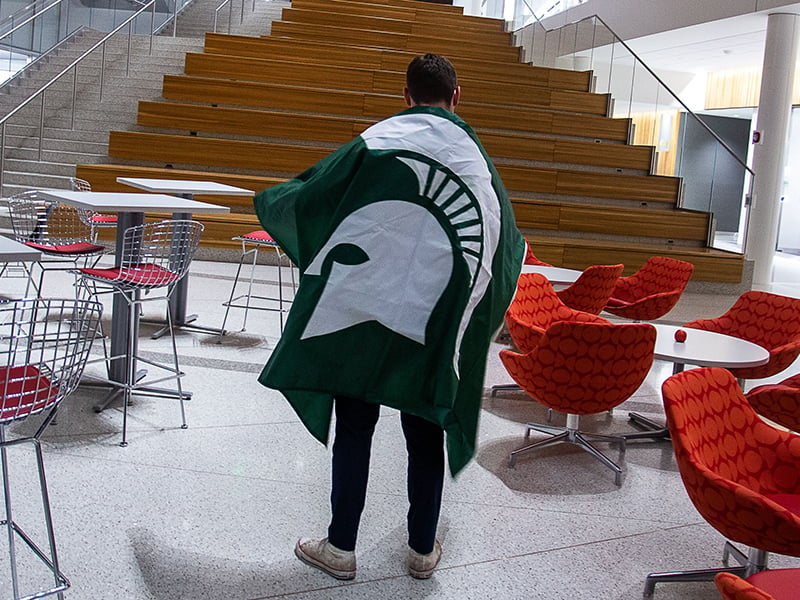If not for John Sorochan (’93, ’95, M.S. ’99, Ph.D. ’02), John “Trey” Rogers might be retired by now.
Maybe tackling some consulting projects. Almost certainly playing golf. Definitely doting on his four grandchildren.
Instead, Rogers, professor of turfgrass management at MSU, is currently consumed by a project bigger and grander than anything he has ever touched over his decorated 40-year career in the turfgrass domain. It’s a monumental six-year effort alongside Sorochan, his former MSU protégé, to oversee design, installation and management research for 16 stadium fields and some 150 training pitches for the 2026 FIFA World Cup.
The largest World Cup in history, the 2026 event will feature 48 teams playing at venues stretching across Canada, Mexico and the U.S., crossing four time zones and three climate zones. It includes 11 American football stadiums in the U.S., soccer temples in Mexico and four indoor (domed) stadiums. And from one venue to the next, FIFA, the planet’s governing body of soccer, demands playing surface uniformity.
Sorochan, a world-renowned expert in sports turf research and Distinguished Professor of Turfgrass Science and Management at the University of Tennessee (UT), calls the World Cup “the holy grail” of turfgrass events. So, when the invite arrived to work with FIFA on the 2026 event, Sorochan wanted Rogers at his side, to resurrect the magic of an event that transformed both of their careers and brought global recognition to MSU.
“I wanted to get the band back together,” Sorochan said.
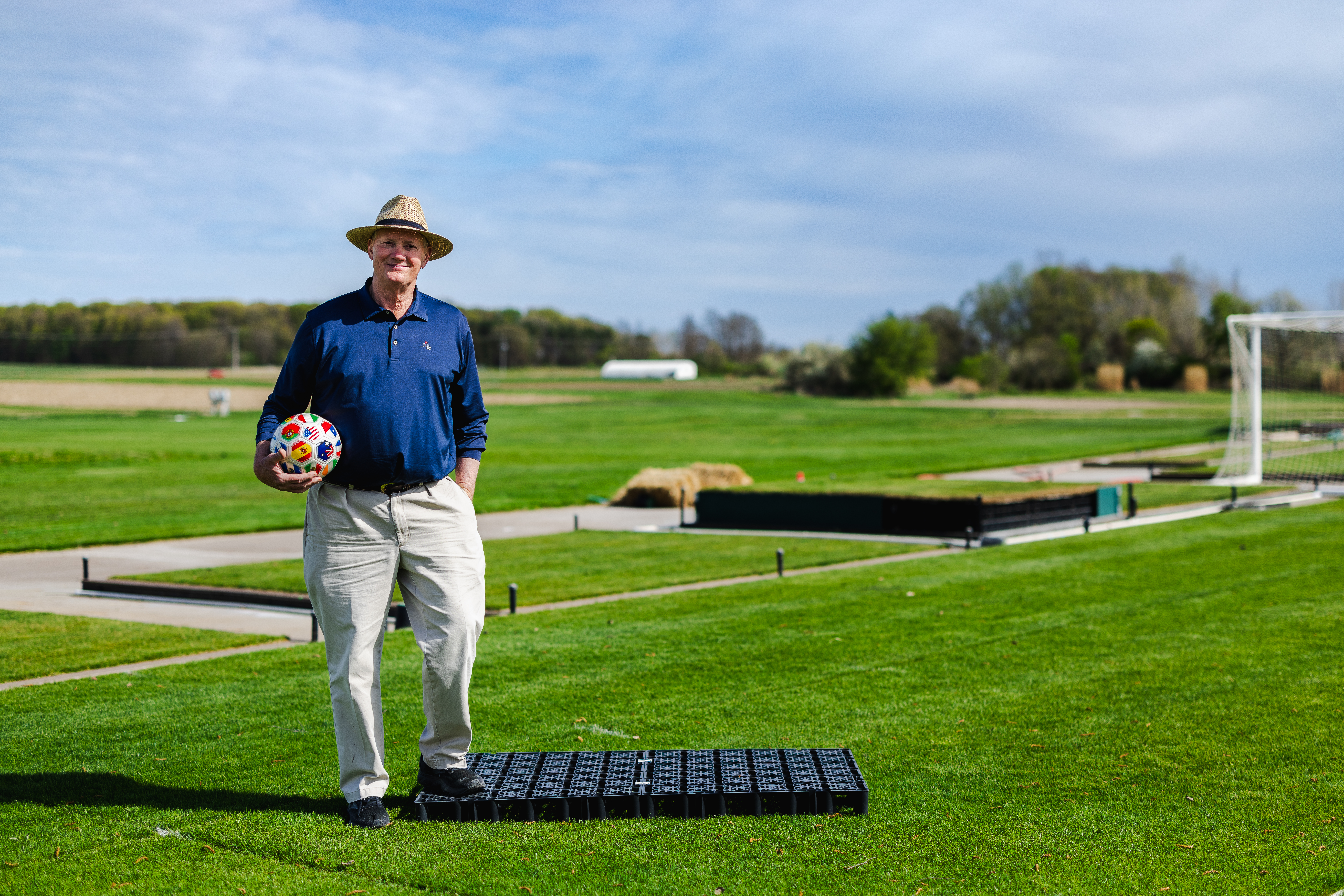
1992
Metro Detroit
As FIFA crafted plans for the 1994 World Cup, the event’s first time on U.S. soil, the organization entertained the daring idea of holding matches in a domed stadium. While venues such as Houston’s Astrodome, the Superdome in New Orleans and the Pontiac Silverdome in suburban Detroit met many of FIFA’s space and amenity requirements, the domes all had artificial playing surfaces, which appeared to squelch any of the organization’s bold, futuristic visions about hosting indoor World Cup matches in 1994. Artificial grass was a non-starter.
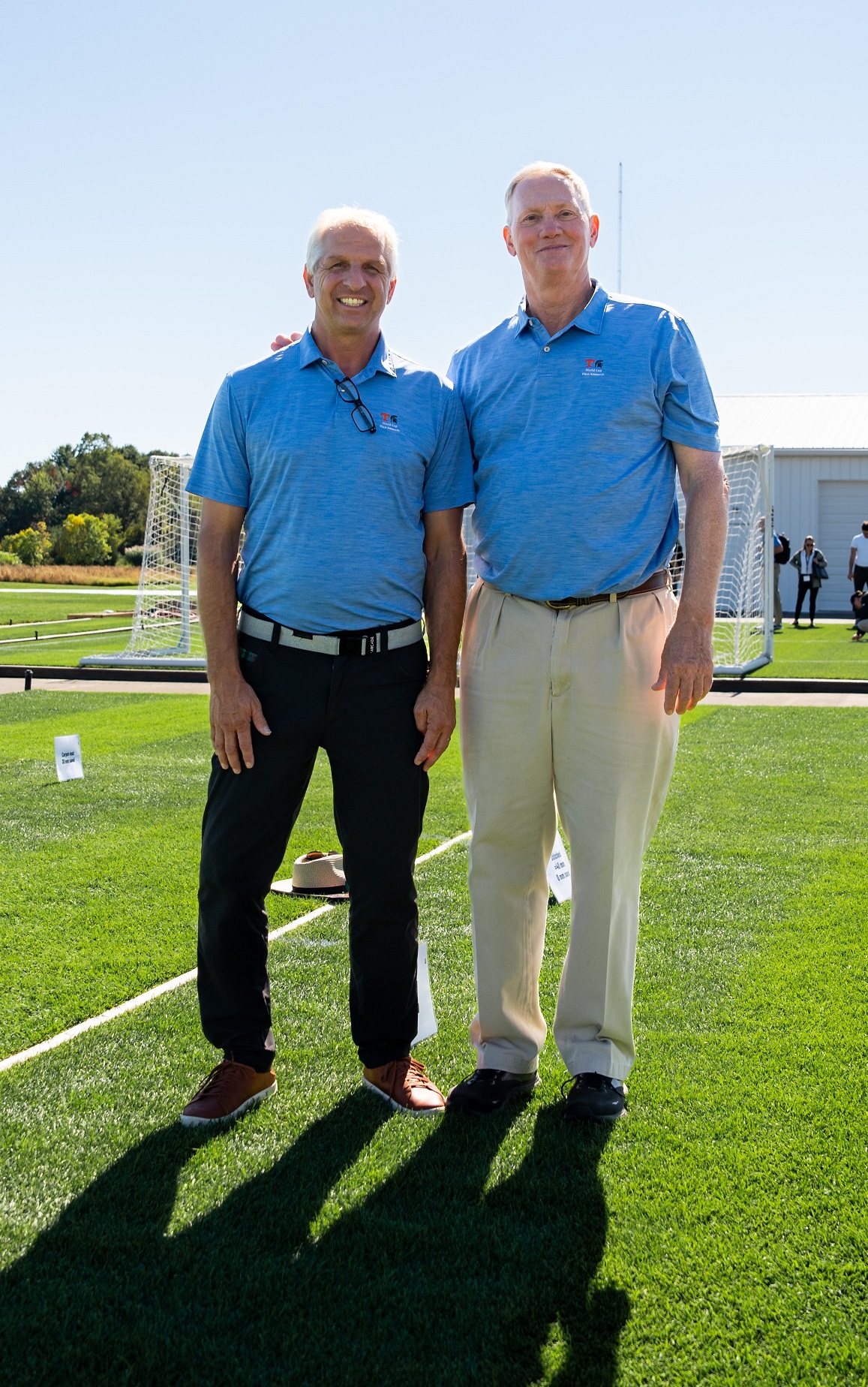
Still eager to bring World Cup games to the Motor City, the organizing committee behind Detroit’s World Cup bid turned to Rogers—then an assistant professor of crop and soil science at MSU—and his MSU Turfgrass colleagues, Jim Crum and Paul Rieke, to discuss the possibility of growing natural grass in the Silverdome. Could it be done?
“There was research from [former MSU faculty member and turfgrass science pioneer] James Beard saying this was feasible, but still a million questions,” said Rogers, who was already growing natural grass indoors, albeit on a much smaller scale, with pitch-and-putt facilities for golfers.
Undaunted, Detroit put forth its bid, a 24-inch-thick document detailing the city’s merits and ambitiously pledging to bring a natural grass playing surface into the Silverdome for World Cup matches. Detroit’s proposal encountered skepticism and snickers, labeled with terms like “bizarre” and “appalling.” No World Cup match had ever been played indoors. Even if FIFA was intrigued by the idea, would one of the globe’s premier sporting competitions take the risk?
On March 23, 1992, the day FIFA was to announce the U.S. host cities, Rogers recalls leaving his house in the morning and his wife asking when he would return.
“Either two hours or two years,” he told her.
June 18, 1994
Pontiac Silverdome
FIFA’s unlikely selection of the Silverdome as one of the nine U.S. sites set off a wild two-year ride for Rogers and his MSU-based team, which included Sorochan, a talented undergraduate in the two-year turfgrass program, as well as research assistant John Stier (Ph.D. ’97). More hypotheses and experiments than Rogers cares to recount. Deep analysis and study interrupted by rock concerts and the fundamental need for sleep. Countless 85-mile drives from East Lansing to Pontiac.
The research effort included the construction of a 6,600-square-foot dome at the MSU Hancock Turfgrass Research Center to simulate conditions in the Silverdome, a facility built with zero thought given to the air circulation and light vital to maintaining natural grass. At “Silverdome West,” which featured the same fiberglass cover as its namesake, Rogers and his team evaluated grass species, soil types, fertility regimes and light levels. They also installed a modular system prototype.
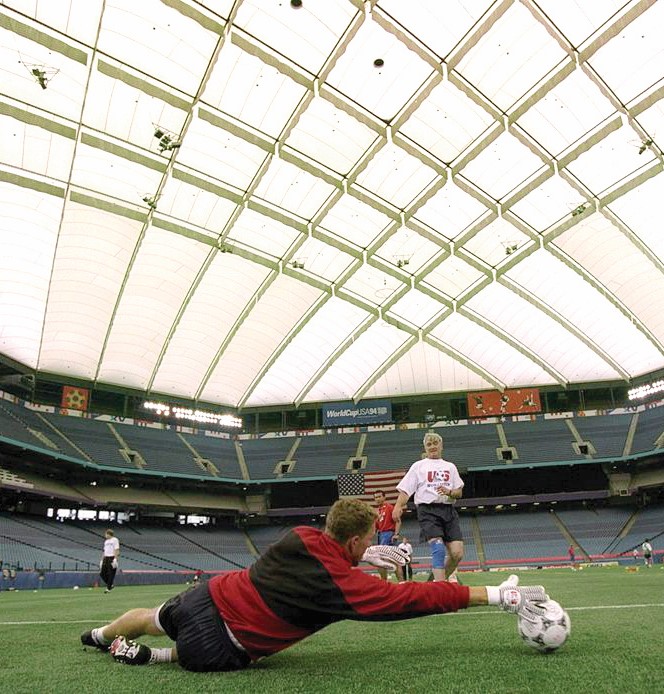
“We had the confidence we could pull this off from an agronomic perspective, but we still had to get the turf inside the Silverdome,” Rogers said. “The whole project required a level of thinking I had never encountered before.”
Understanding the novelty and risk of hosting a World Cup match indoors on natural grass, FIFA requested a dress rehearsal in summer 1993. Rogers’ team delivered, importing the sod into the Silverdome in hexagon-shaped modules for a clash between England and Germany.
Rogers remembers watching from the stands as Germany players trickled onto the Silverdome field for a pre-match training session. He expected them to kick around the grass, to search for imperfections and offer critiques. Instead, he saw players walk directly to midfield and attempt to hit the roof with a soccer ball.
“The grass didn’t matter to them. They weren’t even thinking about it,” he said.
The results of the dress rehearsal energized the MSU team, which charged into the 1994 World Cup determined to deliver on every expectation with an uncompromising blend of science, sweat and savvy. On June 18, 1994, the U.S. National Team battled Switzerland to a 1-1 tie, the first of four World Cup games the Silverdome would host.
“If not for O.J. Simpson, it would’ve been the biggest national story of the day,” Rogers said.
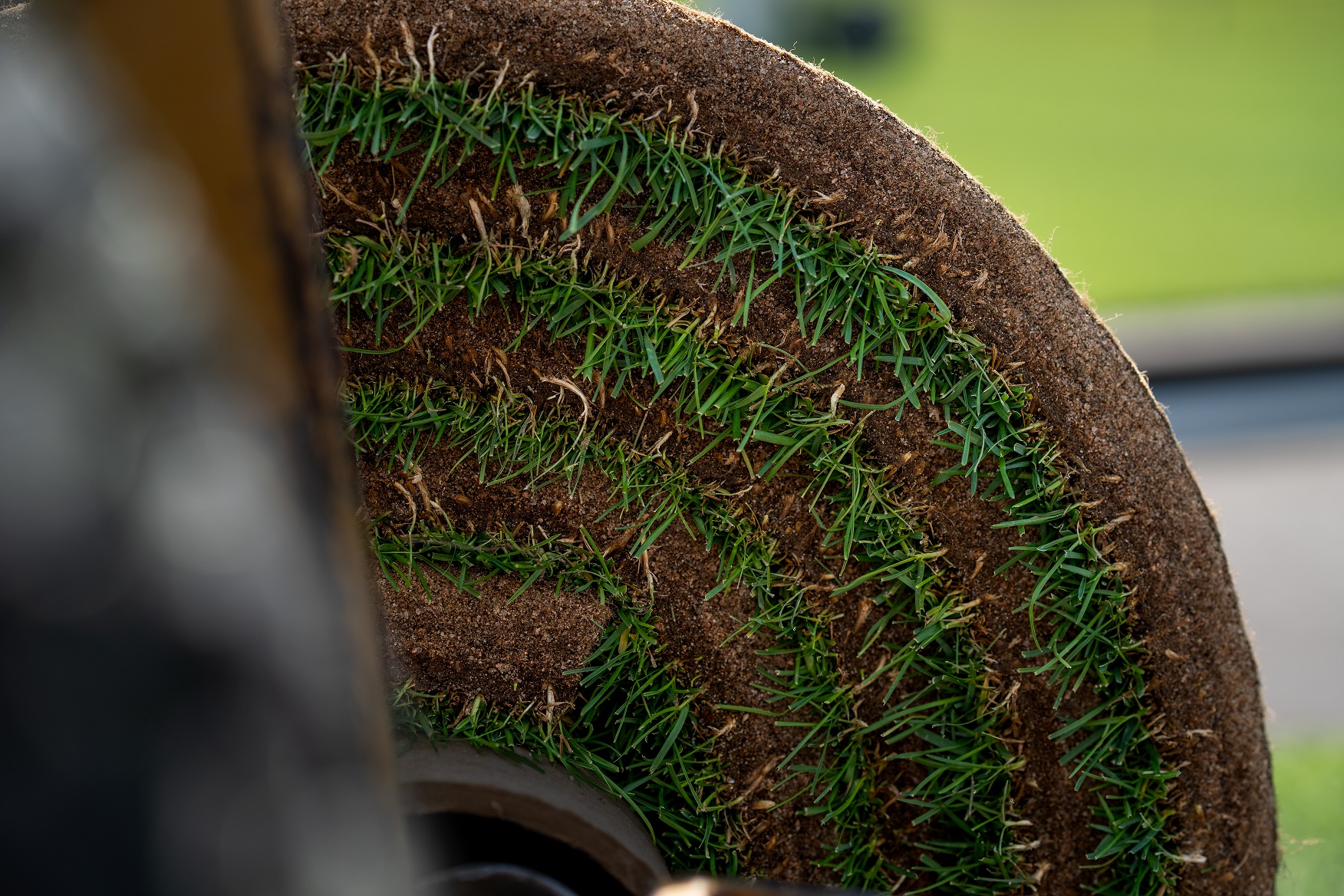
1994-2019
Around the globe
The Silverdome’s World Cup triumph propelled the careers of both Rogers and Sorochan, spurring opportunities far beyond either’s imagination. They earned funding for new research projects, presented the Silverdome story to international groups and consulted on indoor, natural turf fields in Brazil, Spain, Argentina and Amsterdam.
“I was sending John all over the world,” Rogers said of Sorochan, who spent 11 total years at MSU. “It was all part of his education.”
While Rogers, once dubbed the “Sultan of Sod” by The New York Times, slowly exited athletic fields research, turning largely to golf renovations and horse tracks after 2012, Sorochan made it his life’s work. After earning his Ph.D. from MSU in 2002, he joined UT’s faculty ranks, devoting himself fully to the increasingly sophisticated world of sports turf research.
“I remember looking down on the Silverdome field in 1994 and wondering, ‘How can we make this even better?’” Sorochan said.
He became one of the globe’s foremost researchers studying athlete-playing surface interactions, often diving into interdisciplinary projects with colleagues representing biomechanics and kinesiology. Professional leagues, sports franchises and college athletics programs tabbed Sorochan for expert insight. For the last dozen years, he has served as the National Football League Players Association’s representative for field safety and performance.
“I was never surprised by any of the success he had,” Rogers said of Sorochan.
In 2019, Sorochan dined in London with Alan Ferguson, an industry friend and FIFA’s senior pitch management manager. Ferguson mentioned the biggest-ever World Cup event was coming to North America in 2026. In a first-of-its-kind move, FIFA planned to issue a research grant to ensure uniform playing surfaces across all 2026 venues. Ferguson wanted Sorochan to head the project.
“My eyes lit up,” Sorochan said.
Given the size and scope of the project, Sorochan knew he would need help. He pulled out his phone and called Rogers.
“We have the same vision, the same thought processes and it made sense to ask him,” Sorochan said. “He’s been there, done that and knows the pressure of a global event like the World Cup.
“Plus,” he continued, “I’m not where I am without him.”
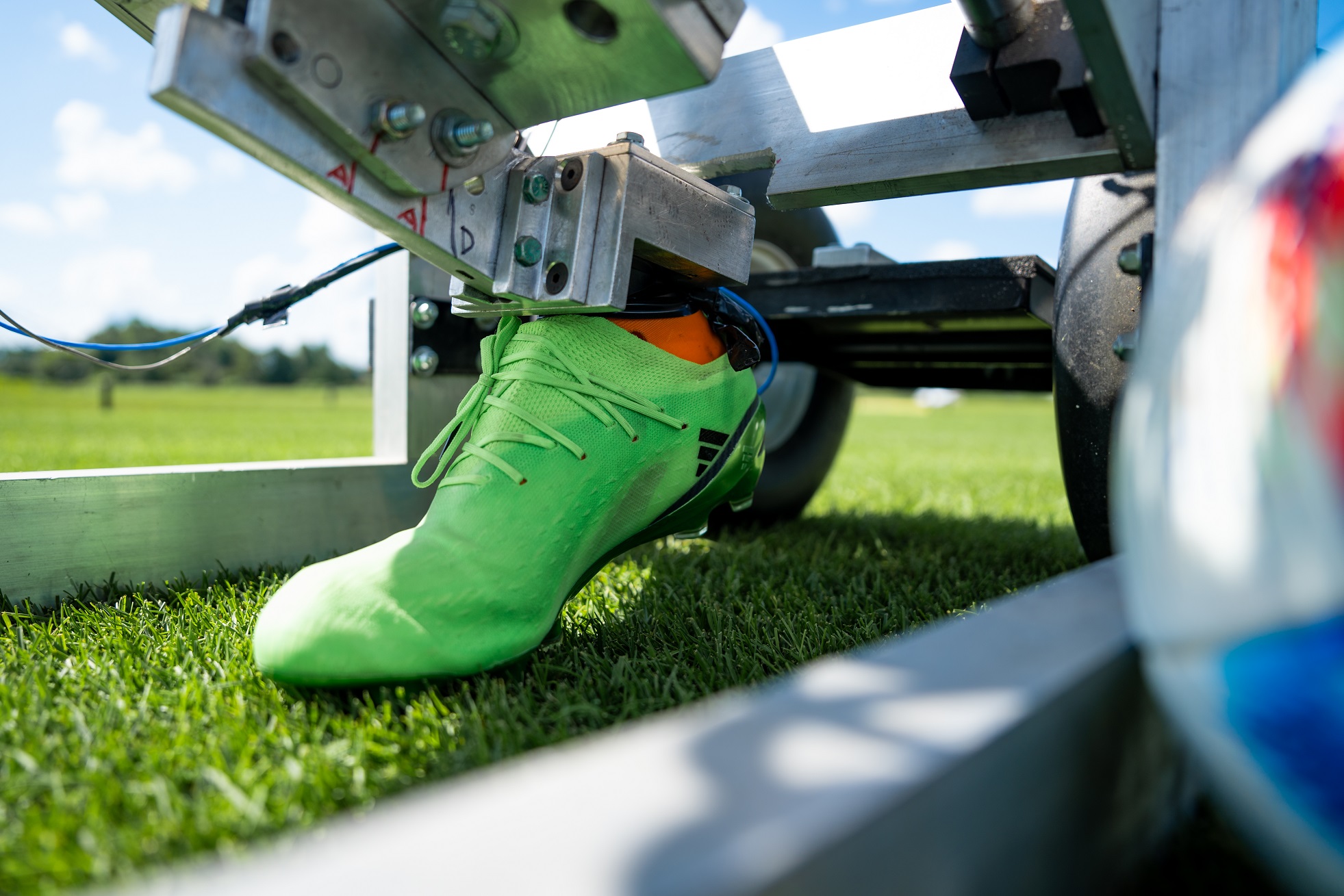
2019-Present
East Lansing, Michigan and Knoxville, TN
In quick time, Rogers and Sorochan found a familiar rhythm, bouncing ideas off one another, launching research projects and attacking the effort with unrelenting enthusiasm and purpose. (Stier, now the associate dean of UT’s Herbert College of Agriculture and professor of plant sciences, is also involved.)

“I don’t know if I ever go 10 minutes without thinking about this,” said Sorochan, who, despite being listed as the FIFA grant’s principal investigator, calls the project a 50-50 endeavor between his team in Knoxville and Rogers’ squad in East Lansing. “We’re one and the same.”
Of the 2026 World Cup’s 16 venues—two in Canada, three in Mexico and 11 in the U.S.—eight do not currently contain natural grass and will require temporary fields. But every venue, even those seemingly prepared to host a World Cup match tomorrow, requires some modifications to hit FIFA’s exacting standards. The spirited work of researchers at MSU and UT will provide evidence-based counsel to help FIFA and site managers construct and manage these projects.
“We need the fields to be as homogenous as possible for ball play and interaction,” Sorochan said.
To date, the research collective has completed more than 100 pilot studies and trials, publishing many of its results along the way to stimulate future advancements in stadium playing surfaces. One study, for instance, included ballistic testing with soccer balls on bermudagrass, Kentucky bluegrass and perennial rye grasses.
“The research is vital because we don’t have these answers in our back pocket,” Rogers said. “How we did this in 1994 with one stadium in our backyard is not how we can do it today.”
The researchers stand in constant communication with FIFA, sharing data later disseminated to training sites as well as national teams. They also remain in close contact with nine sod farms (six in the U.S., two in Canada and one in Mexico) and the 16 stadium field managers to solidify plans for establishing “sod on plastic,” transporting the turfgrass to venues, constructing the fields and managing care.
“Maybe I don’t know all their children’s names, but it’s not far off,” Rogers said of his intimacy with venue personnel.
It is certainly not retirement, Rogers said, but invigorating and rewarding nonetheless. And in a full circle moment, he is now observing Sorochan direct students and empower their contributions to a project capturing global attention.
“I’m trying to enjoy this more than I did in 1994,” Rogers said. “Of course, I can say that now. We haven’t even hit crunch time yet.”
By: Daniel P. Smith
Lead photo: The MSU turfgrass team standing on the World Cup research plots. From left to right: Elijah Delaney, Ryan Bearss, Evan Rogers, Zach Flink, Trey Rogers, Jake Kilby, Jesse Sholl with Jackie Guevara in front (center)
